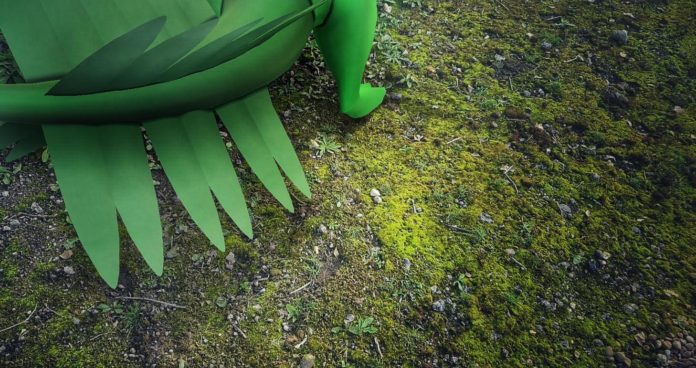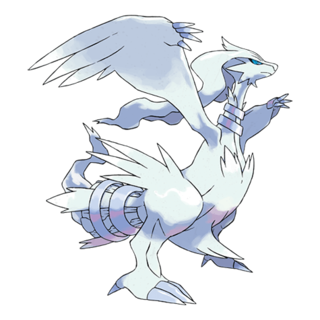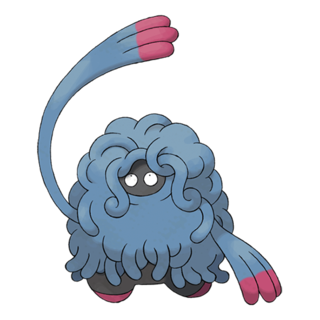TL;DR
Both are outclassed by legendaries, namely Fusion Flare Reshiram and Kartana.
Shadow Blaziken is now the best shadow non-legendary Fire type, but Shadow Sceptile only ties other Grass-type shadows.
Shadow Blaziken (Blast Burn):
- Worse than Fusion Flare Reshiram (current top non-mega Fire), but better than Overheat Reshiram. Also better than a Fusion Flare Reshiram that’s 10 levels lower (L40 vs L30, L50 vs L40).
- Slightly below shadow legendaries (Moltres, Entei, Apex Ho-Oh), but difference is small, can go either way, and depends on IVs.
- Outclasses Shadow Charizard and all other non-legendaries.
- Blaze Kick is surprisingly good. Even though Blast Burn is better more often, Blaze Kick is much more consistent. Wait for Blast Burn if you’re very patient, but evolving and using Blaze Kick now is perfectly reasonable – may not even be worth the ETM unless you’re swimming in them.
Shadow Sceptile (Frenzy Plant):
- Way worse than Kartana. L45 Shadow Sceptile = L30 Kartana.
- On average, <= Shadow Tangrowth, but >= Shadow Venusaur. The difference is small, situational, depends on metric you use, and likely IV-dependent.
- Not a top priority, due to Kartana and also being worse than shadows of other types that you can use (Swampert, Electivire, Magnezone).
Keep reading for:
- Estimator vs. TTW, revisited after April 6
- Detailed comparisons and plots
- Brief discussion on future shadows
- List of my previous analyses, in Appendix
Introduction
As part of this season’s Rocket Takeover event, Shadow Treecko and Shadow Torchic were released on March 21, and will be available for the remainder of the season.
The three Hoenn starters have all seen relevance in raids ever since their Community Days in 2019, either as non-shadow, shadow or mega (as I showed in an earlier analysis dedicated to their megas). The question is, how relevant are they?
Shadow Swampert not only benefitted from having the earliest release by far (since day 1 of the Team Go Rocket feature), but also fares the best among its type, being even stronger than non-Primal Origin Pulse Kyogre. Shadow Sceptile and Shadow Blaziken, however, may have arrived too late. Just in the last 7 months, overpowered (OP) “legendaries” like Kartana and Fusion Flare Reshiram came to place and dominated their respective types.
How much value do Shadow Sceptile and Shadow Blaziken (still) have in 2023? This article will answer the question in three parts:
- Estimator vs. TTW, revisited after April 6
- Shadow Blaziken as a Fire attacker
- Shadow Sceptile as a Grass attacker
- (Bonus) How do Shadow Blaziken and Sceptile compare to future shadows?
If you’re on desktop and want to jump to a particular part, search “Part X”. There’s also “Part X Verdict”, which are more condensed but still somewhat elaborate sections with more advice.
You can now follow me (@teban54) on Twitter!
Part 1: Estimator vs. TTW, Revisited after April 6
[TL;DR] TTW is better for medium and large lobbies without relobbying, Estimator is better for smaller lobbies where you need to relobby. After the remote raid nerf, smaller in-person lobbies will likely become more common, so I’ll lean towards Estimator in my future analyses.
This is worth revisiting in light of the upcoming nerfs of remote raid passes on April 6.
I first started using Average Scaled Time to Win (ASTTW) as a metric, in addition to Average Scaled Estimator (ASE), in my CD Chandelure analysis. Generally:
- Large lobbies: TTW
- Small lobbies, realistic raiding: Estimator
- Extreme short-manning (record setting or challenges, with cherrypicked boss movesets and weather): TTW, or even pure DPS
For a technical explanation of the two metrics:
- TTW does not consider relobbying at all. The moment your 6th Blaziken faint, your 7th Blaziken immediately enters the battlefield. (This is what I consider as “practical DPS”.)
- Estimator considers relobbying, but assumes only one player is beating the boss. When your 6th Blaziken faints, it takes 15 seconds to revive them and join again.
- However, if Blaziken has 33 faints against this boss, its Estimator assumes you relobby 5 times (33/6). But in a duo, there will only be 4 relobbies across both of you (33/12=2 relobby sessions), and in a trio there will only be 3 relobbies. This means Estimator slightly undervalues glass cannons, though not as much as TTW overvalues them.
An important reason for introducing ASTTW last October was that, in a typical remote raid lobby with 6 players, relobbies were rare, especially if you don’t use a full team of glass cannons like Shadow Blaziken and Sceptile.
However, after April 6, it’s reasonable to suspect lobbies of 6 players will happen less often. Hosts will likely find less success inviting 5 other remote raiders at any time, and more raids will be done in small in-person groups with 2-4 players. In such group sizes, relobbying becomes a concern again, making Estimator the more preferred metric.
For these reasons, my emphasis will lean towards estimator (and ASE) moving forward. If your practical situations still favor TTW more, you can always draw conclusions yourself using the TTW results.
Part 2: Shadow Blaziken as a fire attacker
[Part 2 TL;DR] Worse than Fusion Flare Reshiram, similar or worse than Shadow Moltres and other shadow legendaries, better than Overheat Reshiram and Shadow Charizard. Best non-legendary Fire type.
Blaze Kick is a surprisingly good alternative over legacy Blast Burn, being more consistent despite a slightly lower ceiling – ETM not necessary.
 Blaziken (Shadow)
FireFighting
Blaziken (Shadow)
FireFighting
Let’s first take a look at theoretical DPS and ER values, which was why many people were hyped when Shadow Blaziken was announced: (Note this is not my main focus)
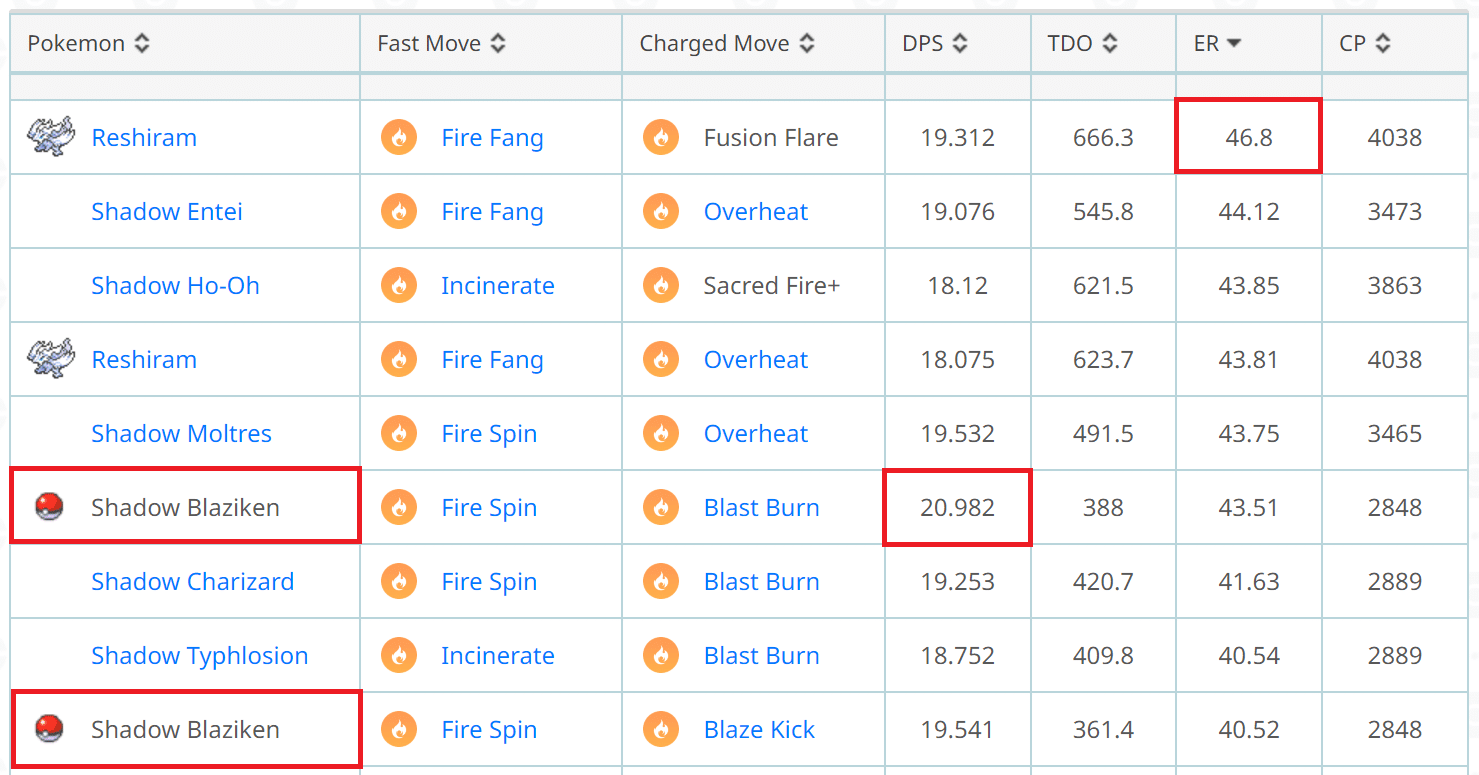
Shadow Blaziken (with Blast Burn) has the highest non-mega Fire-type Damage Per Second (DPS) (8.6% higher than Fusion Flare Reshiram). However, it has atrocious bulk and thus the lowest Total Damage Output (TDO), only 58% of Reshiram’s. This hurts its practical performance.
Metrics like Equivalent Rating (ER, or DPS3*TDO scaled) exist to offer a better estimate of performance, by also taking bulk into account. Under ER, Shadow Blaziken is more in line with Shadow Moltres and Overheat Reshiram instead.
Also note Shadow Blaziken with non-legacy Blaze Kick also makes the chart. Looks strictly worse, right? You’ll be surprised…
Now let’s look at how they actually do in simulations.
Fire Attackers: The Charts

Surprising, right? Blaze Kick better than Blast Burn???
Calm down. I’ll show more detailed comparisons very soon. For now, I’ll note a few observations from the chart, and then comment on whether they’re actually true after a deeper dive…
- “Blaze Kick and Blast Burn are very similar unless you dodge.” There are more nuances to that, but the point is: Blaze Kick is better than you thought.
- Shadow Blaziken < Fusion Flare Reshiram. True.
- “L40 Shadow Blaziken = L30 Fusion Flare Reshiram in Estimator.” Not really, Shadow Blaziken actually does better than that.
- “Shadow Blaziken < Overheat Reshiram in Estimator, worse in TTW.” Not really, the Estimator chart is again a bit unfair to Shadow Blaziken here.
- Shadow Blaziken <= Shadow Moltres. True, and the difference is quite small.
- Shadow Blaziken > Shadow Charizard. True.
Why the discrepancy? this chart shows is averages – averages across all bosses, and averages across each moveset of a boss. (The latter is also what Pokebattler shows you if you don’t select a moveset, and what infographics show you.)
To see the problem with averages, consider the following question:
- What’s the average wealth of Elon Musk and 99 beggars?
I’ll come back to this later, but keep it in mind.
Note: In the entire analysis, Blaziken uses the best fast move possible. This means against Ice and Steel, it often uses Counter, which is better than Fire Spin. But the difference is quite small.
Blast Burn vs. Blaze Kick
[Section TL;DR] Blast Burn is still better more often than not, but when it’s bad, it can be really bad. Blaze Kick has a slightly lower ceiling, but way more consistent. I’d still say Blast Burn is better overall, but Blaze Kick is a completely fine non-legacy option if you don’t want to wait – may not even be worth an Elite TM.
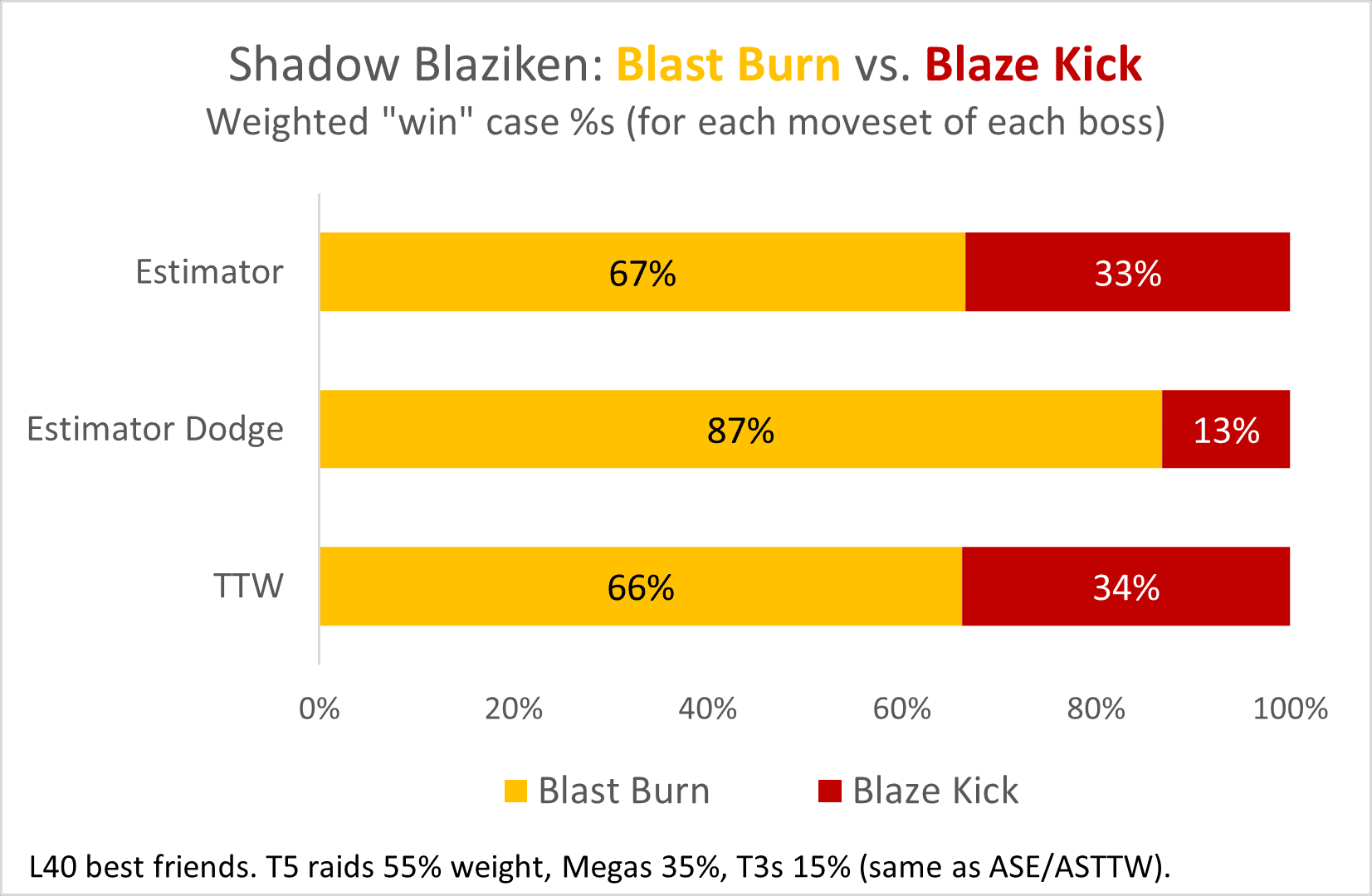
This bar chart only considers which one is better, not “by how much”.
Blast Burn is still better than Blaze Kick in 2/3 of all situations, even without dodging. If you do dodge, Blast Burn is the clear winner (and does get better ASE Dodge in the attackers plot above). This means Blast Burn has a higher ceiling.
But that’s not the end of story…
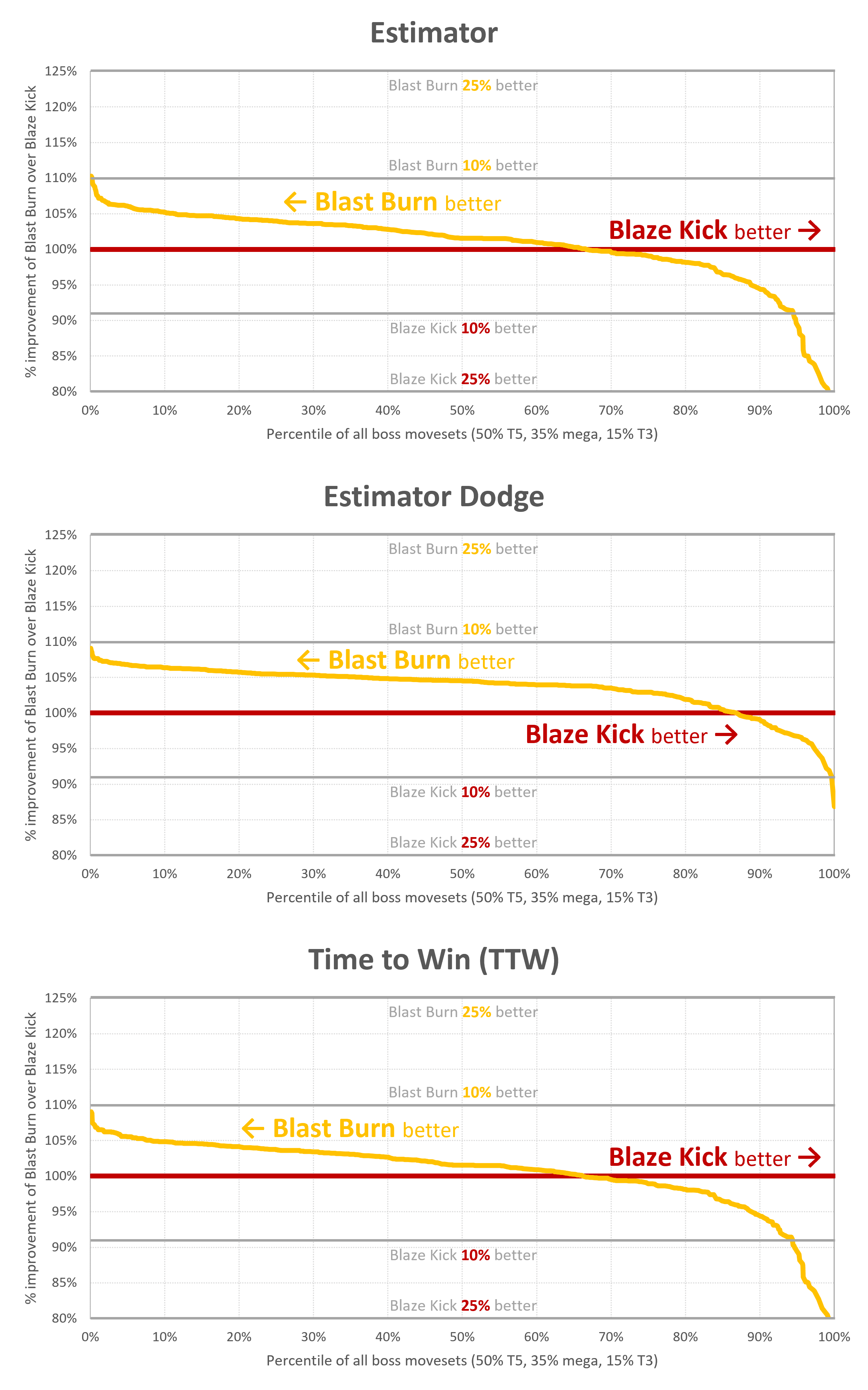
This “Distribution Plot” not only tells you how often is Blast Burn better (look at where the two lines intersect), but also by how much. To the left are bosses and movesets where BB>BK, and to the right, BK>BB. Higher means BB is a lot better, and lower means BK is a lot better.
Focusing on the no-dodging scenarios (Estimator and TTW are the same here), what does this tell us?
- Blast Burn is better than Blaze Kick 67% (2/3) of the time.
- However, when Blaze Kick is better, Blast Burn can sometimes be really, really bad. 5.7% better on average, and the extreme is 27% better!
- This usually happens when the boss hits with Super Effective charged moves (Regice with Earthquake, Kartana with Air Slash/Aerial Ace), but a heavy-hitting neutral charged move can also do (Genesect with Hyper Beam).
- Fortunately, most scenarios on the extreme end are raid bosses that have not entered raids yet, and some of them may never do (Mega Lucario, Mega Metagross, Arceus, Zacian Crown, Calyrex Ice Rider, Jirachi).
- In contrast, when Blast Burn is better, the difference is not as significant. 3.3% better on average.
All this is saying… Blaze Kick has a lower ceiling, but it is more consistent than Blast Burn.
- The “average” Estimator and TTW of Blast Burn suffers from the “Elon and beggars” problem I mentioned above. Its worst-case scenarios are just too bad, which drags down its average by too much, even though in most cases it’s still better than Blaze Kick. This is why the lines for BB and BK almost overlap in my initial plot with all attackers.
- But why? Blast Burn, despite being an OP move, has a long duration of 3.3 seconds. Shadow Blaziken can easily faint in the middle of a Blast Burn, especially given its low bulk, and especially when the boss hits with Super Effective moves.
- Blaze Kick, on the other hand, has a very short duration of 1.2s. You can fire off a Blaze Kick more reliably before fainting, which makes it more consistent, even though Blast Burn would have been better if you get one off.
- This is quite similar to Breaking Swipe vs Outrage on Rayquaza, but Blast Burn fares better here than Outrage did.
Overall, I’d say Blast Burn is still better, at least as of now. The situations where it does badly are either far away (Mega Lucario & Mega Metagross), or may not even materialize at all (Arceus, fusions and Jirachi). For most current bosses, Blast Burn is the choice – just be careful with Kartana.
However, Blaze Kick is completely fine – only marginally worse at most, but more consistent.
If you can’t wait to evolve and use a Shadow Blaziken right now, I’d say Blaze Kick. May not be worth an Elite TM unless you’re swimming in them. But if you’re very patient, wait for an event that gives you Blast Burn upon evolution – you can always double move and have both!
Shadow Blaziken vs. other Fire attackers
[Section TL;DR] Shadow Blaziken is:
- Worse than FF Reshiram
- Usually better than Overheat Reshiram (but the latter is more consistent, hence higher ASE)
- Slightly worse than Shadow Moltres, but can go either way
- Better than Shadow Charizard
- Better than FF Reshiram that’s 10 levels lower
For this section, I always take the best charged move for Shadow Blaziken, between Blast Burn and Blaze Kick.
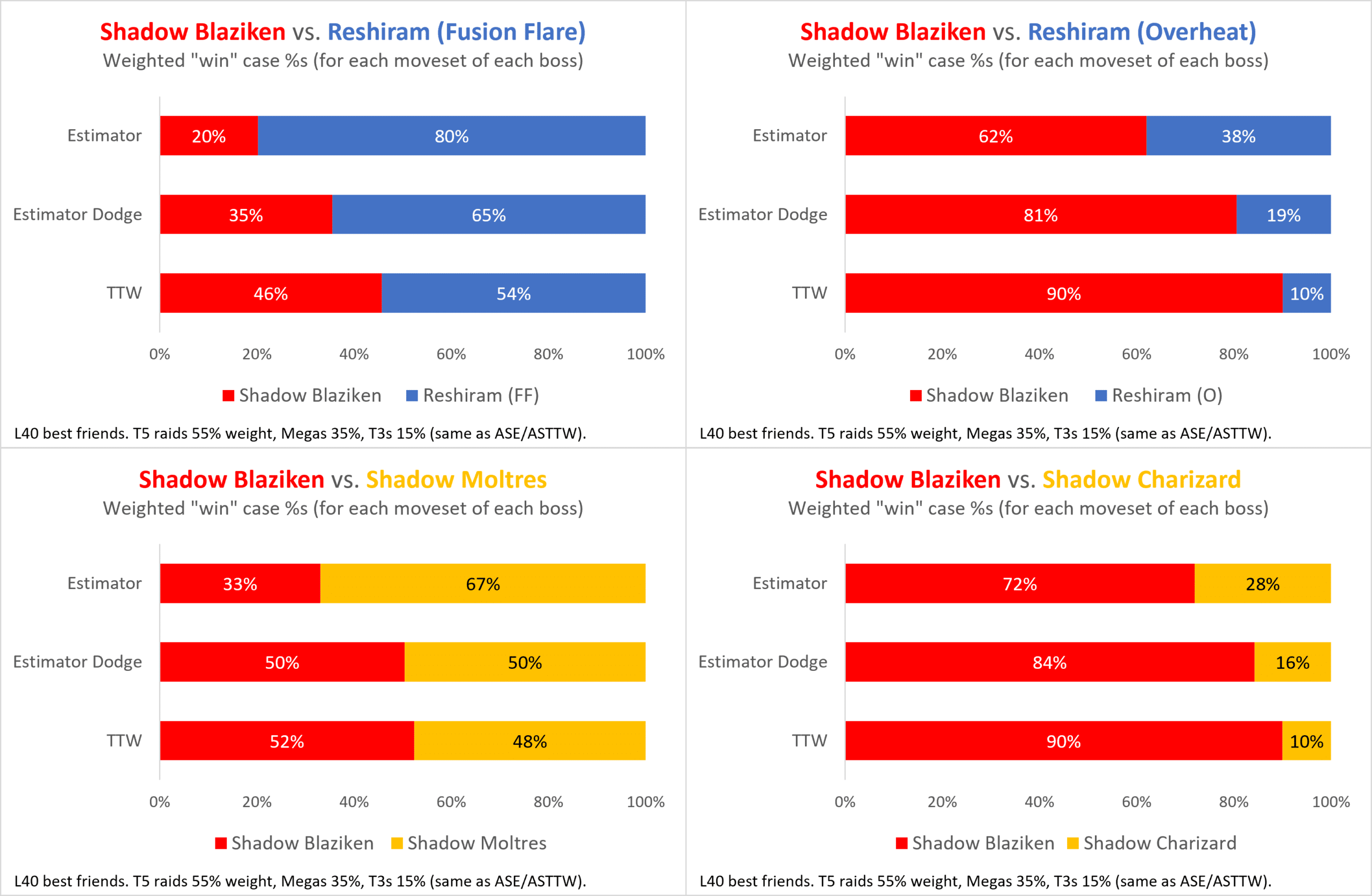
Keep in mind all shadows are assumed to have 15/15/15 IVs. (This is especially relevant for Shadow Moltres.)
Distribution plots for all 4 comparisons:
- Shadow Blaziken vs. Reshiram (Fusion Flare)
- Shadow Blaziken vs. Reshiram (Overheat)
- Shadow Blaziken vs. Shadow Moltres
- Shadow Blaziken vs. Shadow Charizard
I’ll summarize both the “win rates” and distribution plots one by one:
vs. Fusion Flare Reshiram
No contest here. FF Reshiram is clearly better.
Not only does it always “win” in the majority of cases (even in TTW), but there’s still 5% of time when Shadow Blaziken simply collapses. Even when Shadow Blaziken pulls ahead, the difference is very, very small. And that’s before considering IVs…
Sorry, but Shadow Blaziken’s higher DPS is in name only. Another W for ER.
vs. Overheat Reshiram
On the attacker line charts (the one with all attackers), Shadow Blaziken was lower in ASE but higher in ASTTW. However, after a closer look, Shadow Blaziken does have a 62% “win rate” in Estimator while dominating the TTW comparison.
There’s still a 5% chance that Shadow Blaziken melts (mostly psychic moves), and that explains its lower ASE (“Elon and beggars” again). But I’d still say: Shadow Blaziken is better overall, but Overheat Reshiram is more consistent (and with fewer faints). How do you value that yourself? You decide.
vs. Shadow Moltres
The attacker line charts has Shadow Moltres (15/15/15) winning in all three metrics, though just barely in ASTTW and ASE Dodge. That appears to be accurate.
Neither are too consistent here, largely due to typing – both have pros and cons. In TTW, they’re essentially equal. But in Estimator, Shadow Moltres pulls ahead.
- This means Shadow Moltres has fewer faints… But that doesn’t really matter when you most likely don’t have 6 Shadow Moltres to begin with.
My verdict: A small win for Shadow Moltres, but it can go either way with your preferences. Very IV-dependent: A 58% Shadow Moltres is probably worse.
I expect the same for Shadow Entei and Apex Shadow Ho-Oh, even though neither are shown here.
vs. Shadow Charizard
No competition. Shadow Blaziken is better, unless it has a typing disadvantage.
One last point: What if we compare Shadow Blaziken to Fusion Flare Reshiram at a different level?

If Shadow Blaziken (15/15/15) is 10 levels higher than Fusion Flare Reshiram, it wins again.
- Note the attacker line charts show they’re about equal in ASE, but as seen here, not quite. In this case, Shadow Blaziken’s average estiamtor again dragged down by worst-case scenarios.
This is important for people with limited rare candy supply, and for those with more Torchic XLs than Reshiram XLs (read as: most players).
Part 2 Verdict: Is Shadow Blaziken worth it?
Recap:
- Shadow Blaziken < Fusion Flare Reshiram, at equal level. But L50 Shadow Blaziken > L40 FF Reshiram, and likewise L40 > L30.
- Usually, Shadow Blaziken > Overheat Reshiram. But extreme cases drag down its ASE on the plots.
- Shadow Blaziken <= Shadow Moltres, with equal IVs.
- Shadow Blaziken > Shadow Charizard.
- Blaze Kick is a good substitute for Blast Burn, being more consistent despite a slightly lower ceiling.
One thing is clear: Shadow Blaziken is the best non-mega non-legendary Fire attacker – that is, the best option that doesn’t require rare candies. This makes it a very attractive option for those without a huge supply of rare candies. It replaces Shadow Charizard in this role.
However, if you already have 6 Fusion Flare Reshiram and shadow legendaries powered up, Shadow Blaziken doesn’t add much, especially when it comes to replacing FF Reshiram.
Of course, very few players have 6 FF Reshiram. This means Shadow Blaziken is still a worthy investment for most players, especially as the first member of your team due to being a glass cannon. It’s not necessarily a “must get 6” Pokemon, and it depends on how many of the better legendaries you plan to build.
Part 3: Shadow Sceptile as a grass attacker
[Part 3 TL;DR] Way worse than Kartana (L45 Shadow Sceptile = L30 Kartana). Similar to Shadow Tangrowth and Shadow Venusaur. Generally, Tangrowth >= Sceptile >= Venusaur, but situational and may be IV-dependent.
Not a top priority, due to Kartana and other shadows (from the same type and other types).
 Sceptile (Shadow)
Grass
Sceptile (Shadow)
Grass
Once again, let’s first look at theoretical DPS and ER:
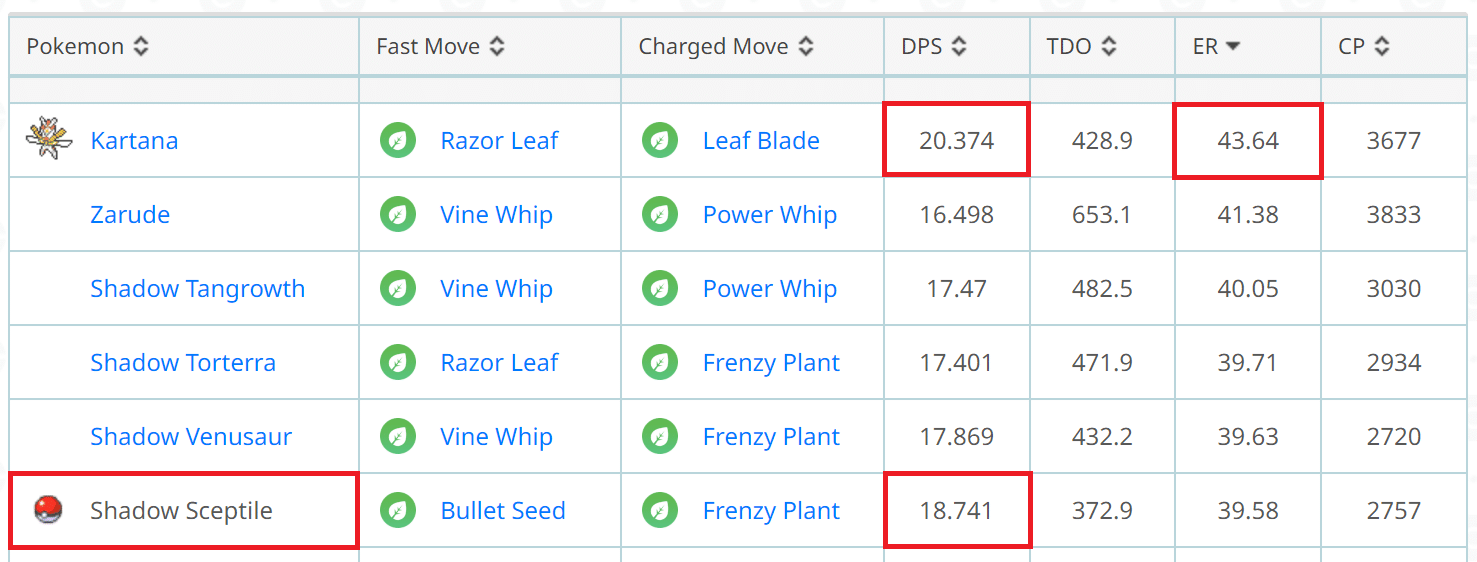
There is one and only one non-mega Grass type: Kartana. Analysis over.
Haha, you know I won’t stop there. But yeah, any Grass attacker not named Kartana is in a sad spot now. Kartana is a glass cannon, but Shadow Sceptile somehow still has less bulk than Kartana.
What if we remove Kartana from the comparison, though? Then you have a bunch of options with similar ER but varying DPS. Shadow Sceptile has the highest DPS of the bunch, but is the glassiest.
Unfortunately, that lack of bulk limits Shadow Sceptile’s potential somewhat…
Grass Attackers: The Charts

The Kartana dominance really shows. Even L30 Kartana is as good as L45 Shadow Sceptile (Frenzy Plant). Honestly, for anyone with enough Kartana saved, pumping 66 rare candies for a L30 Kartana is probably better than building another shadow.
But suppose you don’t have any rare candies or don’t want 6 Kartana. This chart also tells you the following:
- Shadow Sceptile < Shadow Tangrowth in Estimator (by a little bit), = Shadow Tangrowth in TTW
- Shadow Sceptile = Shadow Venusaur in Estimator, > Shadow Venusaur in TTW
We’ll look into both comparisons in the next section, but they’re pretty accurate.
One last thing: Leaf Blade Shadow Sceptile isn’t really worth building, unless you’re desperate. Too much of a dropoff from Frenzy Plant, to the point where it falls below top shadows and becomes more in line with second-tier shadows like Exeggutor. Leaf Blade is actually a great move, just that Frenzy Plant is OP.
Shadow Sceptile vs. other Grass attackers
[Section TL;DR] Shadow Sceptile is:
- Slightly worse than Shadow Tangrowth
- Slightly better than Shadow Venusaur, or maybe equal
- L40 Shadow Sceptile = L30 Kartana
The comparisons with other shadows may be affected by IVs. Not a bad idea to go with the one you have better IVs of.
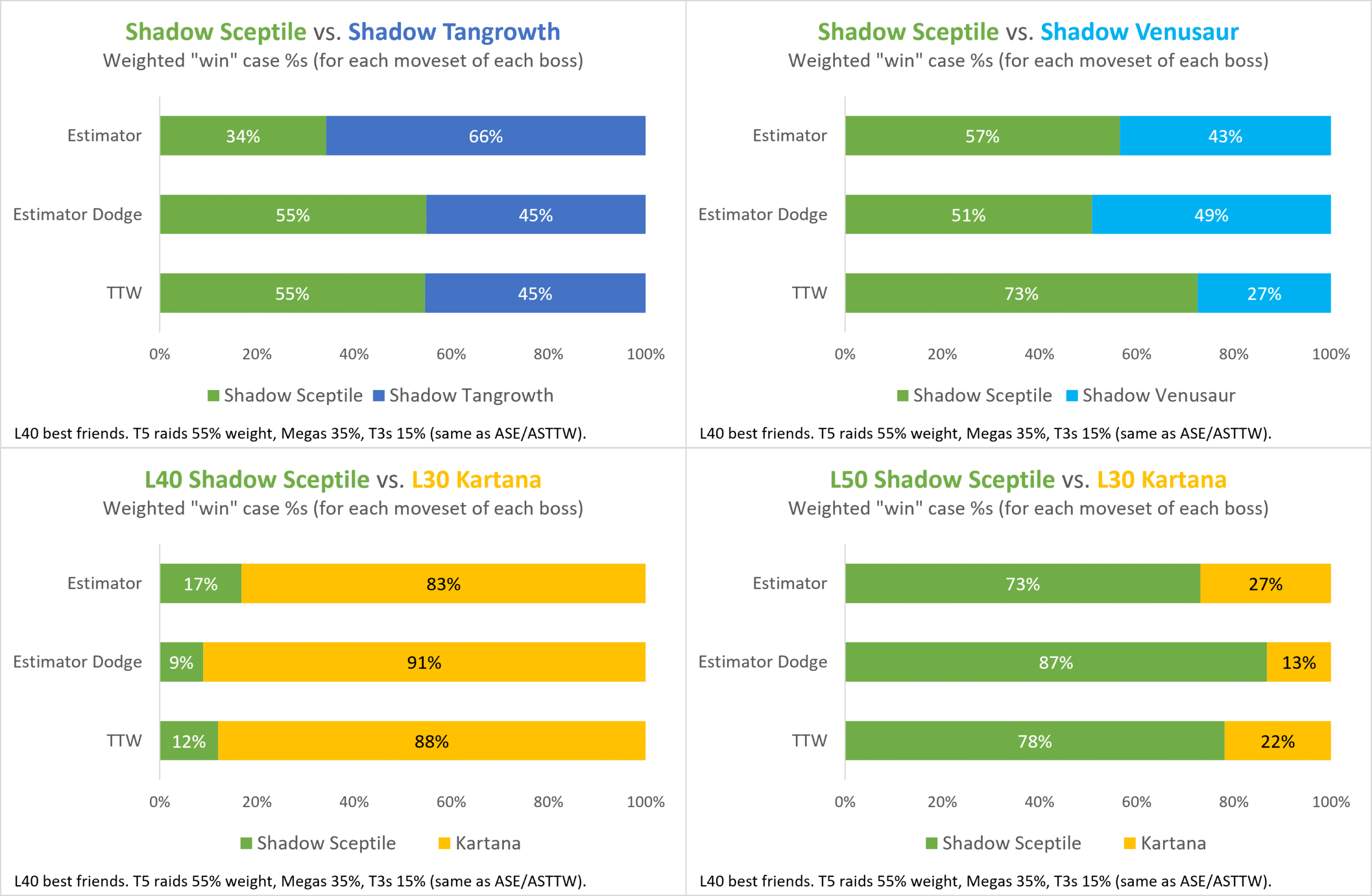
Keep in mind all shadows are assumed to have 15/15/15 IVs.
Distribution plots for the first two comparisons:
I’ll summarize both the “win rates” and distribution plots one by one:
vs. Shadow Tangrowth
Both are mono grass types, so it’s a contest of DPS vs bulk here. In this case, the slower but bulkier Shadow Tangrowth wins – it’s more consistent and tanks big charged moves more reliably.
Looking at the “win rates” alone already tells you Shadow Sceptile is underwhelming in Estimator, and even in TTW they’re just about equal. But in the distribution plot, you’ll see that:
- When Shadow Sceptile is better, the difference is not a lot.
- When Shadow Tangrowth is better, there are several cases where Shadow Sceptile is really bad.
- Blizzard Kyogre (T5) and Fire Blast Groudon (T5) being here should catch nobody by surprise. So are the Ice-type coverage moves that a lot of water bosses conveniently pack.
- But a few others are just embarrassing. Rock Slide and Close Combat Terrakion? Stone Edge Regirock? Hydro Pump Primal Kyogre?
Ultimately, in most neutral scenarios, the difference is small enough to be IV-dependent. You probably won’t go wrong with just picking the one with better IVs.
vs. Shadow Venusaur
I’ll give this one to Shadow Sceptile – similar in Estimator, better in TTW. Difference is very small, and again IV-dependent.
Shadow Venusaur’s Poison typing does bring it some bad cases with typing disadvantage, but the key difference is that, unlike Shadow Tangrowth, Venusaur no longer tanks charged moves as reliably due to missing bulk. For example, Blizzard Kyogre is a win for Sceptile now, because Shadow Venusaur gets OHKOed by it.
Shadow Sceptile is still quite unreliable in the absolute worst cases, but otherwise it does a bit better here than compared to Shadow Tangrowth – just enough to get a narrow win in my book. But you can really argue either way (as Shadow Sceptile’s number of faints is atrocious), and not to mention IVs may play a part too.
vs. L30 Kartana
As the attacker line chart showed, you need L45 Shadow Sceptile to break even with L30 Kartana. Neither are very reliable (and in fact L30 Kartana has even more bad cases), but in neutral scenarios L40 Shadow Sceptile is just a bit too weak, whereas L50 is just strong enough.
This also means L50 Shadow Sceptile < L40 Kartana.
Part 3 Verdict: Is Shadow Sceptile worth it?
Recap:
- L40 Shadow Sceptile <<< L40 Kartana
- L45 Shadow Sceptile = L30 Kartana (likewise L50 < L40)
- Shadow Sceptile <= Shadow Tangrowth
- Shadow Sceptile >= Shadow Venusaur (the last two are very close)
One aspect not shown here is that Shadow Sceptile, just like other shadow Grass types, are typically worse than shadows of other types that you can also use – namely, Electric (Shadow Electivire/Magnezone) and Water (Shadow Swampert).
With all these considered… Even though Shadow Sceptile is tied with others as a top-tier Grass-type shadow (thus one of the best non-legendaries), it’s not a top pick for investment. Unless you explicitly want variety, another Kartana is simply much better, another shadow of another type is probably better, and it’s not like Shadow Sceptile outclasses other shadow grasses either (unlike Shadow Blaziken).
This also means Shadow Sceptile has the lowest relevance among the three Gen 3 shadow starters. However, it’s no doubt still useful, and better than non-Kartana non-shadows like Tapu Bulu and Roserade.
Part 4: How do Shadow Blaziken and Sceptile compare to future shadows?
Not sure how many people will live to see these future shadows, so I’ll keep it short.
Shadow Blaziken:
- Shadow Chandelure and Shadow Darmanitan will outclass it.
- Aside from these two, Shadow Blaziken is quite safe. Stuff like Shadow Flareon and Shadow Emboar add more variety, but on average, they won’t overtake Blaziken.
Shadow Sceptile:
- Shadow Roserade will outclass it.
- Shadow Chesnaught is also generally better, mostly due to better bulk.
More detailed discussions about future Fire and Grass attackers can be found in my Mega Gen 3 starters analysis. I also mentioned some future fires when writing about Fusion Flare Reshiram.
Remarks (unrelated to main article)
Unfortunately, like many of you, my motivation both as a writer and as a player has been really low recently. A busy IRL schedule contributed a lot (and caused the delay of this article), and right when I finally sorted them out… Remote raid nerfs were announced.
This article already came way later than I wanted it to (I apologize), and even then, writing it was like pulling teeth. I know I’ve expressed frustration and negativity with writing several times before, so pardon me for doing this again, but I really don’t feel I can just suck it up anymore.
I won’t quit writing, at least not yet. At the very least, there’s still an upcoming article on CD Togekiss (without CD move obviously), and I’ll probably be here for at least a couple months. It helps a lot knowing that people still appreciate and enjoy my work. But I’m not sure if I can give any long-term guarantees – if I disappear one day, I hope you’re not surprised. I had a few long-term ideas before this, but now I wonder if I’ll be motivated enough to pull them off.
To those who are still producing content related to raids, kudos to you. To those who are still reading them even if you’ll do much fewer raids than before, thanks a lot. And be assured that if I do quit writing one day, I’ll make all my (poorly written) code and existing data available somewhere, so that someone else can pick up where I left off if they want to.
Appendix: Past analyses on other types
- Bug: Bug Out
- Dark/Ghost: Gholdengo & DIB Melmetal
- For Tyranitar speculations: Tyranitar CD Classic
- For Giratina-O comparisons: Shadow Force Giratina-O
- Dragon: Breaking Swipe Rayquaza
- For full future attackers: Mega Salamence
- Electric: Reshiram & Zekrom with Fusion moves
- Mega Mewtwo Y (Thunderbolt) data is wrong
- For Xurkitree comparison: Bug Out
- Fairy: Mega Gardevoir
- Fighting: Shadow Mewtwo (Part 2 Terrakion section), with a few future and speculative attackers
- For future megas: September GBL update (Mega Mewtwo X data is wrong)
- Also Galarian birds, Ultra Beasts & Sneasler
- Fire: This article
- For more on Reshiram and Zekrom: Reshiram & Zekrom with Fusion moves
- Mega Mewtwo Y (Flamethrower) data is wrong
- For full future attackers: Gen 3 mega starters
- Flying: Staraptor CD
- Grass: This article
- For full future attackers: Kartana and Gen 3 mega starters
- For Chesnaught-specific plots: Chesnaught CD
- Ground: Primal Kyogre & Groudon
- Ice: Kyurem & Mega Glalie
- Mega Mewtwo Y (Ice Beam) data is wrong
- Psychic: Mega Gardevoir
- For Shadow Mewtwo with IVs: Shadow Mewtwo
- For full future attackers: September update/Psychic Spectacular
- Mega Mewtwo data is wrong
- Rock: Tyranitar CD Classic
- For full future attackers: Gigalith CD
- Steel: Gholdengo & DIB Melmetal
- For full future attackers: Mega Aggron
- Water: Mega Slowbro CD
- For more on Primal Kyogre: Primal Kyogre & Groudon
- For full future attackers: Gen 3 mega starters

